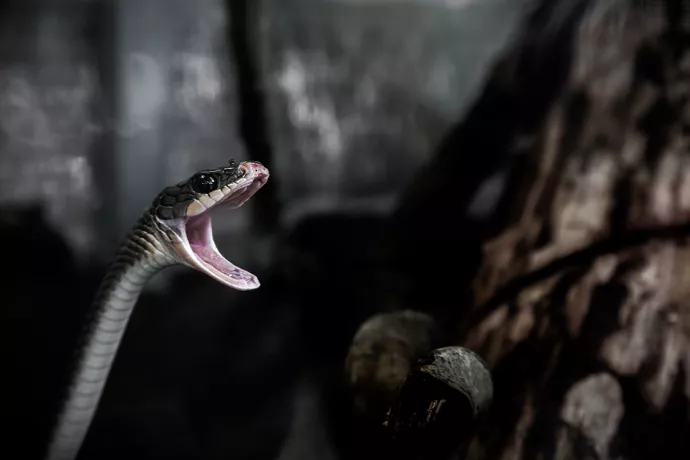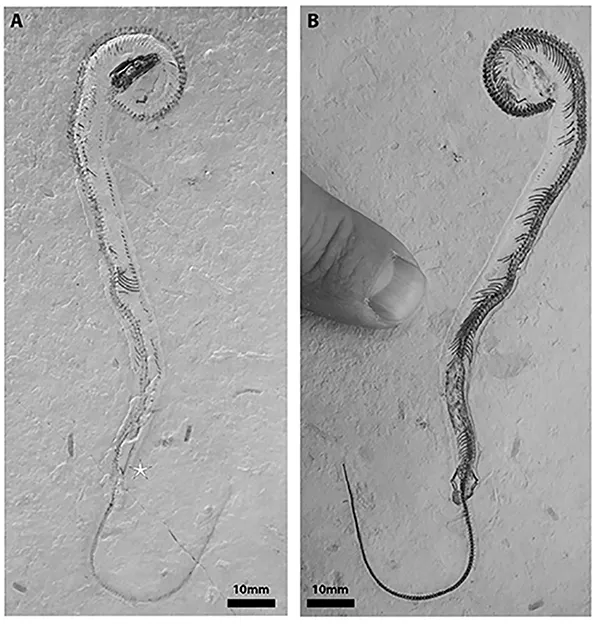Correcting the fossil record: Researchers discover controversial four-legged ‘snake’ is a different ancient animal

It all started with a grand claim: scientists had discovered the first known four-legged snake fossil from Brazil. The specimen, named Tetrapodophis amplectus, was small – about the size of a pencil – with tiny limbs. It was considered a significant discovery that offered paleontologists a major clue into the link between lizards and snakes.
Scientists have long believed that snakes lost their limbs through evolution, and UTM biology professor Robert Reisz says there is a very rich fossil record of snakes that have the cranial adaptations of a snake, and still have remnants of limbs.
But the conclusion of this latest discovery didn’t sit well with him and his colleagues.
“I was so upset about this kind of poor science making it into a top journal in the sciences,” says Reisz, who along with Michael Caldwell from the University of Alberta, demanded to see the fossil in-person. “Soon after the original publication (in 2015), we secured access to the specimen by raising hell and then we were able to study it. And we basically went and did our detective work properly and we came up with a much more plausible alternative explanation that this is not a snake, but a little lizard.”
Reisz says the way in which the fossil was first obtained raised red flags. Around the mid-20th century, Brazil had outlawed fossil exports – but this artifact was illegally exported and bought by a private collector who allowed researchers to publish the article about it.
“It was quite unethical,” he says. “There are laws in place now to protect (these national treasures) and we should respect those and work within the system rather than be tempted by the attraction of an exciting fossil you get through unethical means.”

Reisz and Caldwell went to Germany to look over the artifact, which was housed in a small, private museum that exhibits materials from the region, including Jurassic reptiles and dinosaurs.
“We re-studied it, spent a couple days with it, and found that the available evidence was much better than was presented by (the authors) because in addition to the actual fossil, there was also extensive impression,” Reisz says, adding that he and Caldwell got a lot of information from the impression of the specimen’s skull.
He explains that when a fossil forms, it forms between layers of rock. The impression it creates as it becomes rock, together with sediments, is extremely valuable because of its precision.
In this case, the rock that the fossil was extracted from was split – with the skeleton and skull on opposite sides of the slab. The shape of each was preserved as an impression on the opposite side. The original study overlooked the natural impression that showed that the skull was “more lizard-like than snake-like.”
Reisz says snakes have an extremely mobile skull where many bones are reduced and others are loosely connected to each other – particularly around the back end of the skull and jaw joint. He adds that snakes can also move several bones out of the way, while still connected to each other in the skull, to swallow prey whole.
Reisz and Caldwell also discovered that the original authors’ claims about the arrangement of the specimen’s teeth were false.
He explains that a snake’s teeth are designed to allow prey to go in one direction down the mouth, but they are strongly curved to prevent any movement of the mouth.
“The way they interpreted the fossil was wrong in the way they interpreted the teeth as well,” Reisz says. “So not only was the skull more lizard-like than snake-like, but the teeth were more lizard-like than snake-like.”
While he and his colleagues found that the Tetrapodophis amplectus wasn’t a snake, Reisz says it’s still a significant fossil in a way.
The team found that the anatomy was consistent with the anatomy of dolichosaurs – an extinct marine lizard from the Cretaceous period. It shows yet another example of the way lizards evolved and reduced their limbs to adapt to their environment, he says.
Reisz adds that the story also serves as a reminder that “science is a quest for truth, and the closer we get to the truth, the better.
“We want to find out, and get as close to, the truth as possible,” he says. “Every time we find yet another interesting fossil, it gets us closer to that. We find out more about life before us.”
Read more:



